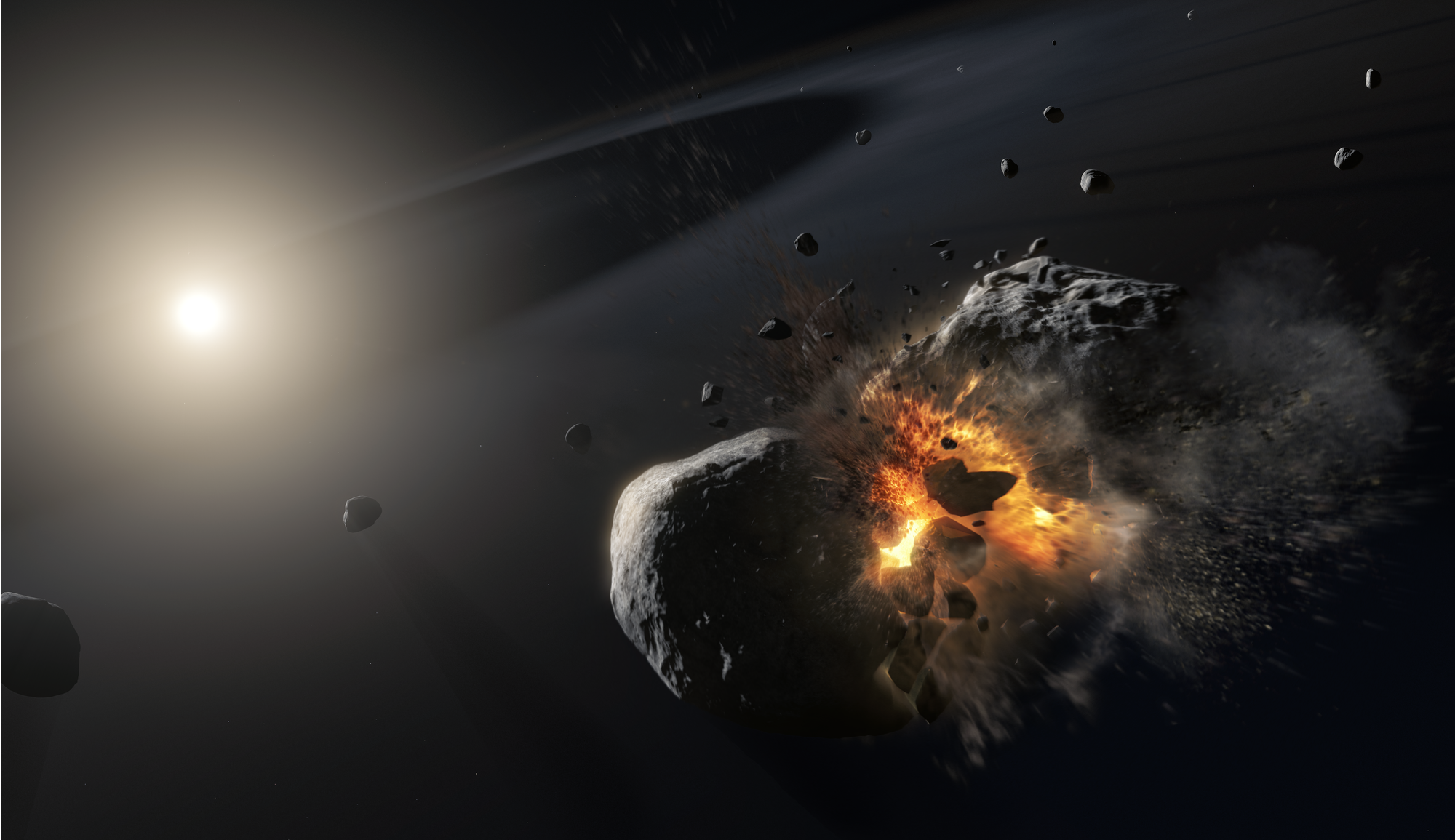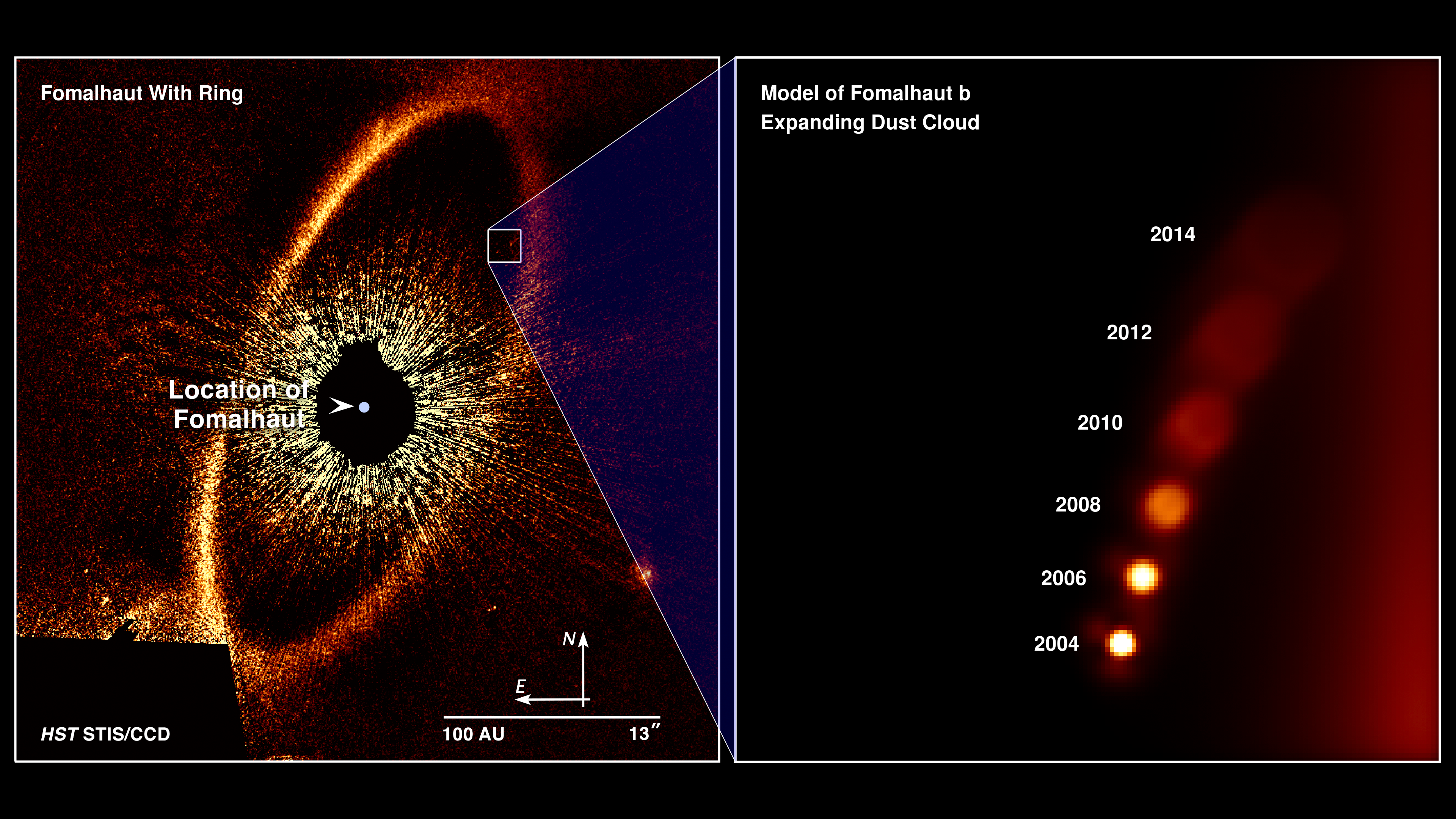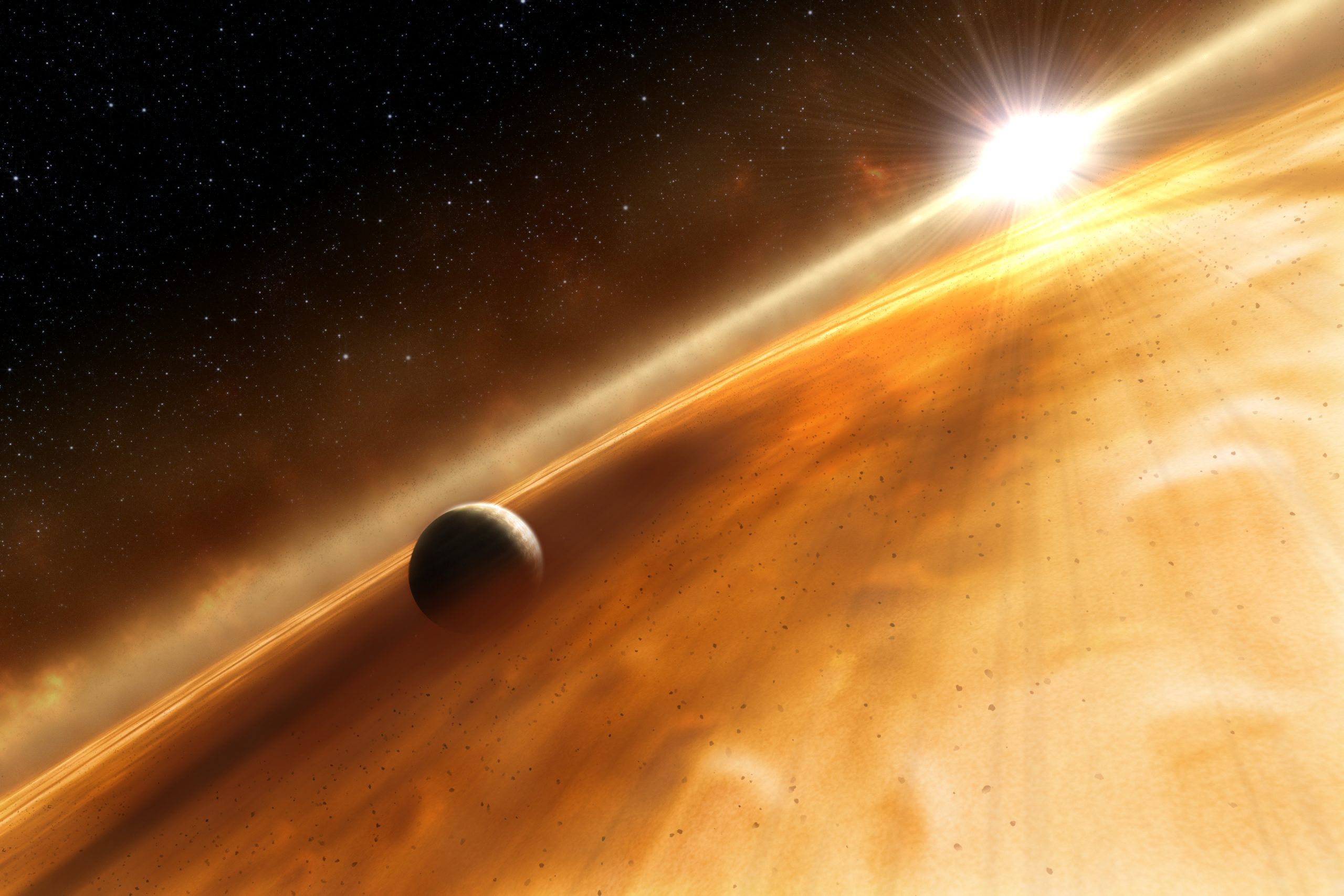Blown to dust: the first exoplanet visible in a telescope is no more
In 2008, researchers looking at images from the Hubble Space Telescope found a bright spot moving around the star Fomalhaut located 25 light-years from Earth. At 400 million years old, Fomalhaut is still relatively young. The star, twice as heavy as the Sun and 17 times brighter, is also circled by a dust disk that the researchers identified as a remnant from planetary formation.
Fomalhaut b was thus the first exoplanet detected through direct, optical imaging, not just indirectly through star crossings or wobbling patterns of movements by its star. In 2015, the approximately Jupiter-sized planet was even given its own name, Dagon. However, over time, astronomers noticed a few strange things. For one, the planet appeared significantly brighter than it should have been. Its orbit also appeared to be very eccentric, with an orbital period of 2000 years and its distance to its star varying between 49 and 290 astronomical units.
But it’s possible the researchers were just seeing a mirage. According to an article in PNAS, a team of astronomers claims that Fomalhaut b never even existed. In reality, Hubble had seen nothing more than a dust cloud that might have been created by a collision of two planetary cores. The collision probably happened not that long ago, maybe even right before the first observation in 2004, but the dust cloud has already dispersed enough that Hubble cannot see it anymore. Since then, the micrometer-sized residue has spread out across a distance of 1 astronomical unit – too fine for Hubble’s eyesight.
The cloud also appears to be on a trajectory out of the Fomalhaut system, certainly another consequence of the collision. Because the former “planet” was located within the large dust disk, the collision was probably between two celestial bodies made out of rock and ice, for example, two planetesimals with diameters of about 200 kilometers. Researchers believe such events would be normal in the Fomalhaut system, and would take place approximately every 200,000 years.


